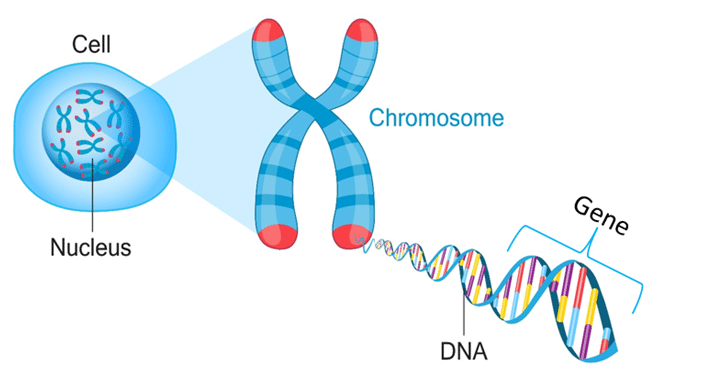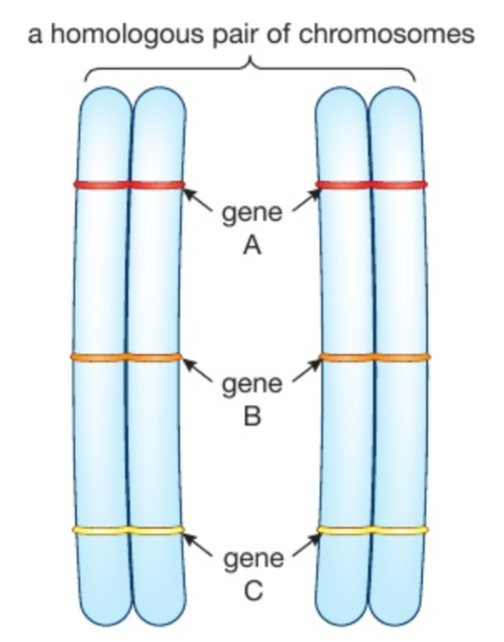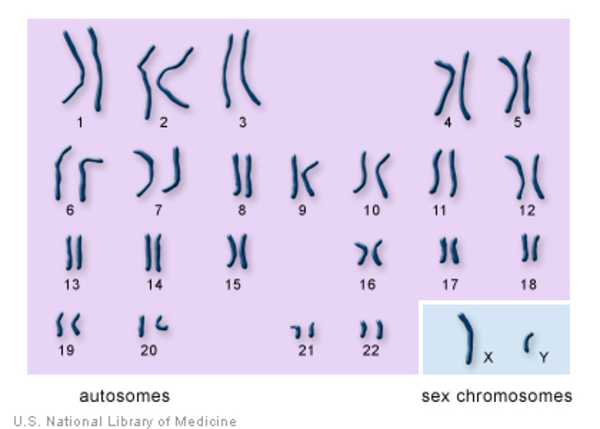Chromosomes WRITE PART ONE OF CELL DIVISION HERE
1/10
There's no tags or description
Looks like no tags are added yet.
Name | Mastery | Learn | Test | Matching | Spaced |
|---|
No study sessions yet.
11 Terms
Genome
the entire DNA of an organism (the amount of DNA present in a diploid cell)
Modern molecular biology discovered that a big/small part of the genome consists of protein-coding genes
small
For example, in the human genome the genes coding for proteins only make up about 1.5% of the total DNA.
Diagram of our genetic makeup

Chromosome
Threadlike structures of supercoiled DNA carrying genetic info in the form of genes
How many chromosomes do most human cells contain? What are pairs of matching chromosomes called?
46 chromosomes
Homologous pairs

Remember that the total number of chromosomes in each species differs. Dogs have 78, humans 46 , rice plants 24
What is the only moment chromosomes are visible? Where can we find chromosomes?
During cell division
In the nucleus of each cell
What are the cells that do not have 46 chromosomes? Why and how many do they have?
Red blood cells have no nucleus and so have no chromosomes
Sex cells (called gametes) have half (23) because of meiosis
Key point
What are the sex chromosomes?
X and Y chromosomes
How are the chromosomes in a female and a male going to differ?
Each cell from a male has 22 pairs of chromosomes and 2 that do not form a pair -- X and Y chromosomes (46 total). Except the sperm
Each cell from a female has 23 matching pairs including a pair of X chromosomes (46 total). Except the egg cell

One of each of the 22 homologous pairs are shown, along with the X and Y sex chromosomes